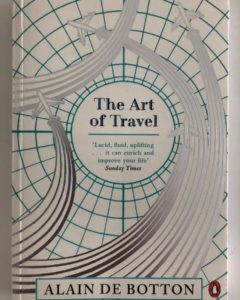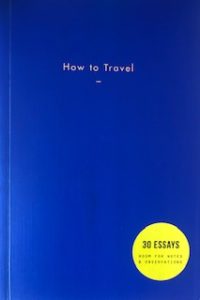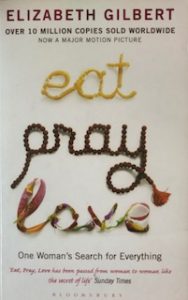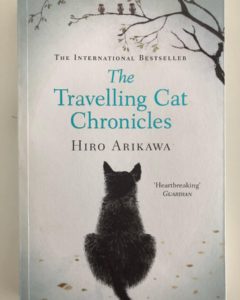My favorite books and films about traveling
Globetrotters and travel enthusiasts like myself have recently found solace in reading books or binge-watching TV series and (feature or documentary) films. Although these activities are by no means substitutes for traveling, they can still take us to all those places we wish to visit but can’t (or may not yet want to) physically travel to. For instance, unable to travel to Greece this summer, I recently published the post ‘Traveling to Greece through film & music’. Then, a few weeks later, my friend Deborah sent me a link to the article ’10 of the best novels set in Greece – that will take you there’ recently published in the Guardian. This gave me the inspiration for a literary trip to Norway, one of my favorite travel destinations. I had already watched 12 Norwegian TV series. Today, however, I discuss my favorite books and films about traveling, no matter the destination.
The Art of Travel
The book
Alain de Botton is one of my favorite contemporary authors and ‘The Art of Travel’ (first published in 2002) my favorite book of his.
Inspired by his own travels and informed by the work of a selection of other writers and artists, the Swiss-born British author shares his insights on the value of traveling.
From Hammersmith in West London, where he currently lives, he takes us on a journey across the world. In the book, we fly to Barbados and to Amsterdam, we take the train to the Lake District, we spend an extended weekend in Madrid, we visit the Sinai Desert, and we stay in a farmhouse in Provence, before returning back to the UK and to the London Docklands.
In this journey, our guides are the French novelists Joris-Karl Huysmans, Gustave Flaubert and Xavier de Maistre, the poets Charles Baudelaire and William Wordsworth, the painters Edward Hopper and Vincent Van Gogh, the Prussian polymath Alexander von Humboldt, the Irish philosopher Edmund Burke, and the English art critic John Ruskin.

The film
This 49-minute-long documentary film followed several years after the publication of the book and is presented by Alain de Botton himself. It is not to be confused with another film that bears the same name, directed by Thomas Whelan.
Having read the book first, I found the film strangely familiar. Not surprisingly, the book has a much wider scope than the film, so it might have been better if I’d watched the film first.
In the film, we find ourselves onboard a cruise ship in the Mediterranean, before visiting a country that Alain de Botton considers exotic: the Netherlands. He then takes to East Germany before returning home, to the UK.
Somewhere in East Germany, Alain de Botton reflects that ‘road journeys can be the midwives of interesting thoughts’. I don’t know about road journeys, but both the book and the film certainly are. Not necessarily uplifting, but undoubtedly interesting, they’re both jam-packed with interesting reflections on traveling.
The film focuses on several problems associated with modern-day traveling. One such problem is that many of us heavily rely on the guidebooks and we often blindly follow somebody else’s path rather than finding our own. Another problem Alain de Botton identifies is the fact that our travel destinations are almost never picture-perfect; this is not because we have been misled in any way, shape or form, but simply due to the inescapable fact that we have taken ourselves (with our personalities and our problems) in our journeys.
This is not a reason to write traveling off, but it is a great opportunity to reflect on the reasons and purpose of our travels. I personally travel not just to escape from my daily life or to simply visit a new place, city or country, and take beautiful pictures, but because the experience of traveling, quite like reading a book or watching a film, has allowed me to learn about the world and improve as a person.
In fact, Alain de Botton reminds us that ‘the ability to see our own lives from a radically different perspective is one of the greatest gifts travel can give us’. I couldn’t agree any more. At the end of the day, to borrow another phrase from the book, ’unhappiness can stem from having only one perspective to play with’, and since traveling can open our eyes up to different perspectives, it can help us become a bit happier.
How to Travel
The book
‘How to Travel’ is another book about traveling I am particularly fond of. It is published by The School Of Life, a global organization co-founded by Alain de Botton, which, amongst other services they offer, publish educational videos on YouTube and books like this one.
‘How to Travel’ is a collection of 30 essays about traveling. Although the author has not been named, I wouldn’t be surprised if it was Alain de Botton.
In ‘How to Travel’ I read that ‘we are seeking, through our travels, not just to see new places, but also to become fuller, more complete human beings. The place we go to should, ideally, help to teach us certain lessons that we know we need to hear. Our destinations are a guide to, and a goad for, who we are trying to become. Travel accedes to its true nobility when we ensure that the physical journey can support a well-defined inner journey towards maturity and emotional health’. They add that ‘through travel you’re growing up – and into yourself’. I would argue the same is true for activities such as reading books or watching films (as well as psychotherapy). In fact, the authors refer to ‘a deep noble search for wisdom and balance’ as ‘the ideal goal of art, civilization and travel’.

The video
Soon after I read ‘How to Travel’, I watched ‘The Point of Travel’, on the School Of Life YouTube channel. Quite like the book, this 4-minute-long video offers an interesting reflection on why we (should) travel. Assuming that ‘we are on an inner journey – that is, we’re trying to develop in particular ways’, traveling allows us ‘to go to places that can help in our inner evolution’ with ‘the outer journey assisting us with the inner one’. As such, traveling is ‘a sort of therapy’ that can ‘help make us into better people’ and ‘grow into better versions of ourselves’. Taking it a step further, the video suggests that ‘in an ideal world, travel agencies would be manned by a new kind of psychotherapist, to find out what’s wrong us with s and how we might want to change’.
As a Psychiatrist as well as a travel enthusiast, I found these reflections of particular interest. I am a firm believer that psychotherapy can help us learn (about ourselves, as well as new skills) and use this knowledge and skills to improve our lives. I certainly wouldn’t go as far as to say that traveling is a substitute for therapy (especially when it comes to the treatment of mental illness). Nonetheless, for those not suffering from a mental illness, traveling can complement therapy; it can even be regarded as a therapeutic activity.
Eat, Pray, Love
The book
‘Eat, Pray, Love’ exemplifies the above. It’s been 14 years since the famous memoir by Elizabeth Gilbert was first published. Nowadays widely considered an example of travel literature, ‘Eat, Pray, Love’ takes us on a year-long journey to Italy, India and Bali (Indonesia). This is a voyage of self-discovery (an inner journey) for the author; at the same time, the outer journey allows both Gilbert and the reader to immerse themselves into three very different cultures. Although the book has been marketed with the female reader in mind, being a male reader myself, not only I enjoyed it but I also found myself strongly identifying with the heroine/author. Perhaps, this had something to do with the fact that I happened to read it when I was at exactly the same age that Gilbert was when she embarked on this life-defining journey. Or, perhaps not…

The film
The film adaptation of the book was released in 2010 directed by Ryan Murphy and starring Julia Roberts. I first watched it shortly after its release. Despite the largely negative reviews, I enjoyed the film, and perhaps even more so the second time I watched it (around the same time when I read the book).
The Travelling Cat Chronicles
The book
‘The Travelling Cat Chronicles’ is the only work of fiction that has made it into this list of my favorite books and films about traveling. It is no secret that I am a travel enthusiast as well as a cat lover. So, when I came across the title of this novel by Hiro Arikawa, I knew I had to read it. A beautifully written story, it follows a man and his cat around Japan, a country that has always fascinated me. While the protagonist embarks on an outer journey to visit friends and family in search of a new home for his beloved cat, he also re-visits his past on an inner journey.

The film
A film adaptation was released in 2018 directed by Kôichirô Miki. Unfortunately, I am yet to watch it.
Further reading
For more literary and cinematic trips around the world, check out the following posts (of mine) and articles (from the Guardian):
Greece
Traveling to Greece through film & music
10 of the best novels set in Greece – that will take you there
Italy
10 of the best novels set in Italy – that will take you there
France
10 of the best novels about France – that will take you there
Spain
10 of the best novels set in Spain – that will take you there
Norway
A literary trip to Norway with Alex
12 Norwegian TV series to watch
A cinematic journey to the Nordic countries
Japan
5 (+1) Japanese novels to read in 2020
South Korea
A cinematic journey to South Korea
Last but not least, there’s another article I recently read, which recommends one travel book for each of the seven continents:
Travel through literature: a book for every continent
Alex
(the soon-to-be-Traveling-again-Psychiatrist)